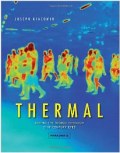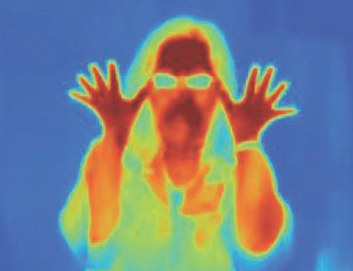 The heat is on – Designer and thermal photographer Joseph Giacomin of Brunel University contacted me about his book – Seeing the World Through 21st Century Eyes. “The book,” he told me, “provides a visual journey through the world around us through the medium of thermal photography, hopefully stimulating questions about both the effect of man’s activity on the environment and the nature of our perceptual relationship with the environment.”
The heat is on – Designer and thermal photographer Joseph Giacomin of Brunel University contacted me about his book – Seeing the World Through 21st Century Eyes. “The book,” he told me, “provides a visual journey through the world around us through the medium of thermal photography, hopefully stimulating questions about both the effect of man’s activity on the environment and the nature of our perceptual relationship with the environment.”
The book is at once both scientific and artistic. Not only does it hook into one of the most compelling discoveries – that what we see, what we perceive, is all in our heads, not “out there”, it also shows how modern techniques such as thermography can bridge the divide between scientific constructs and social constructs. “It is equally deployable for scientific measurement and personal expression,” Giacomin told me. “Such new media can be used to bring people ‘into’ the scientific problem itself, blurring somewhat the nature of uncertainty.” Giacomin explains that this current book is intended as a primer that touches upon various underlying matters, the metaphysics if you will. Future works will develop the associated design aspects.

It is indeed a compelling read and a visual feast for fans of thermal imaging. You can see samples of Giacomin’s thermal imagery here. Giacomin was also kind enough to release a free sample chapter in PDF format from his book which you can read on Sciencebase Free “Thermal” chapter.